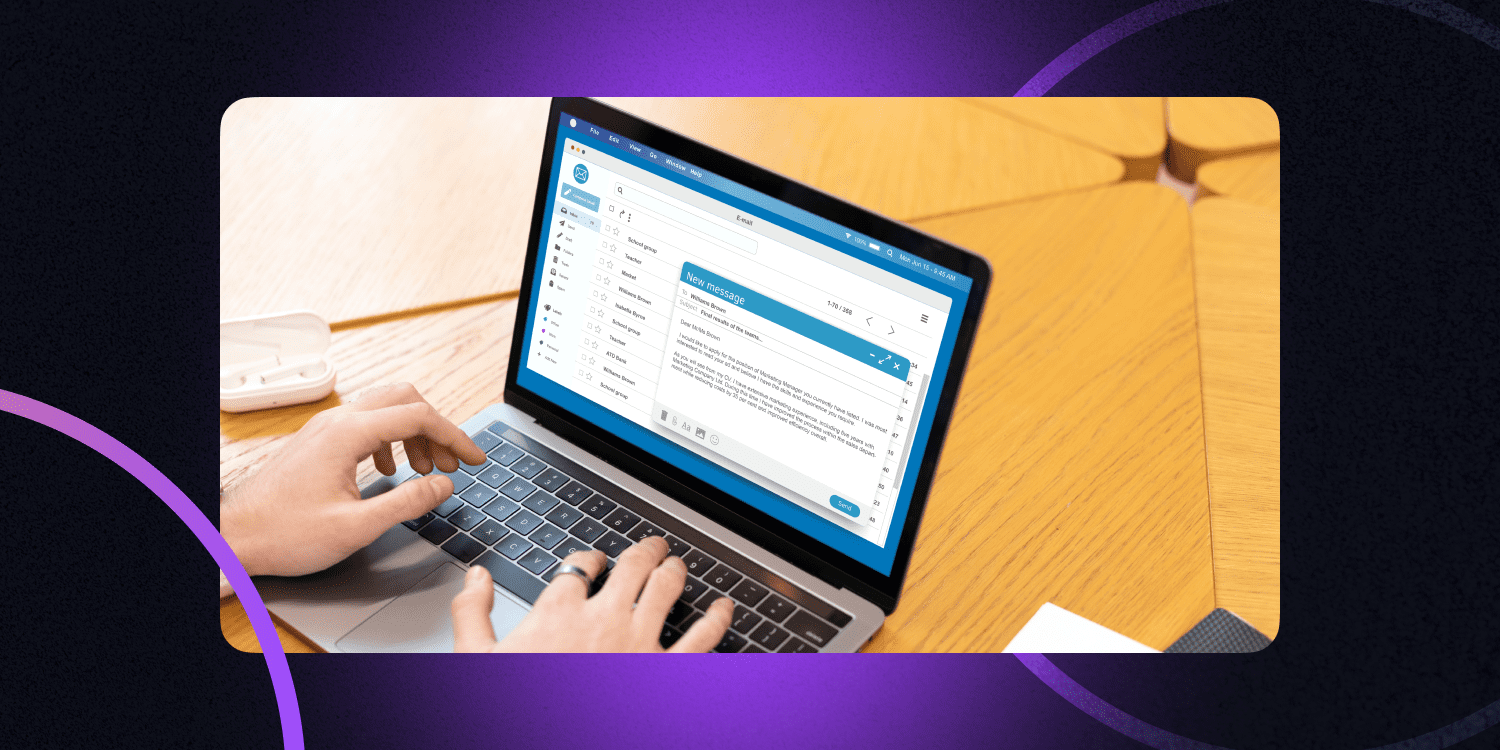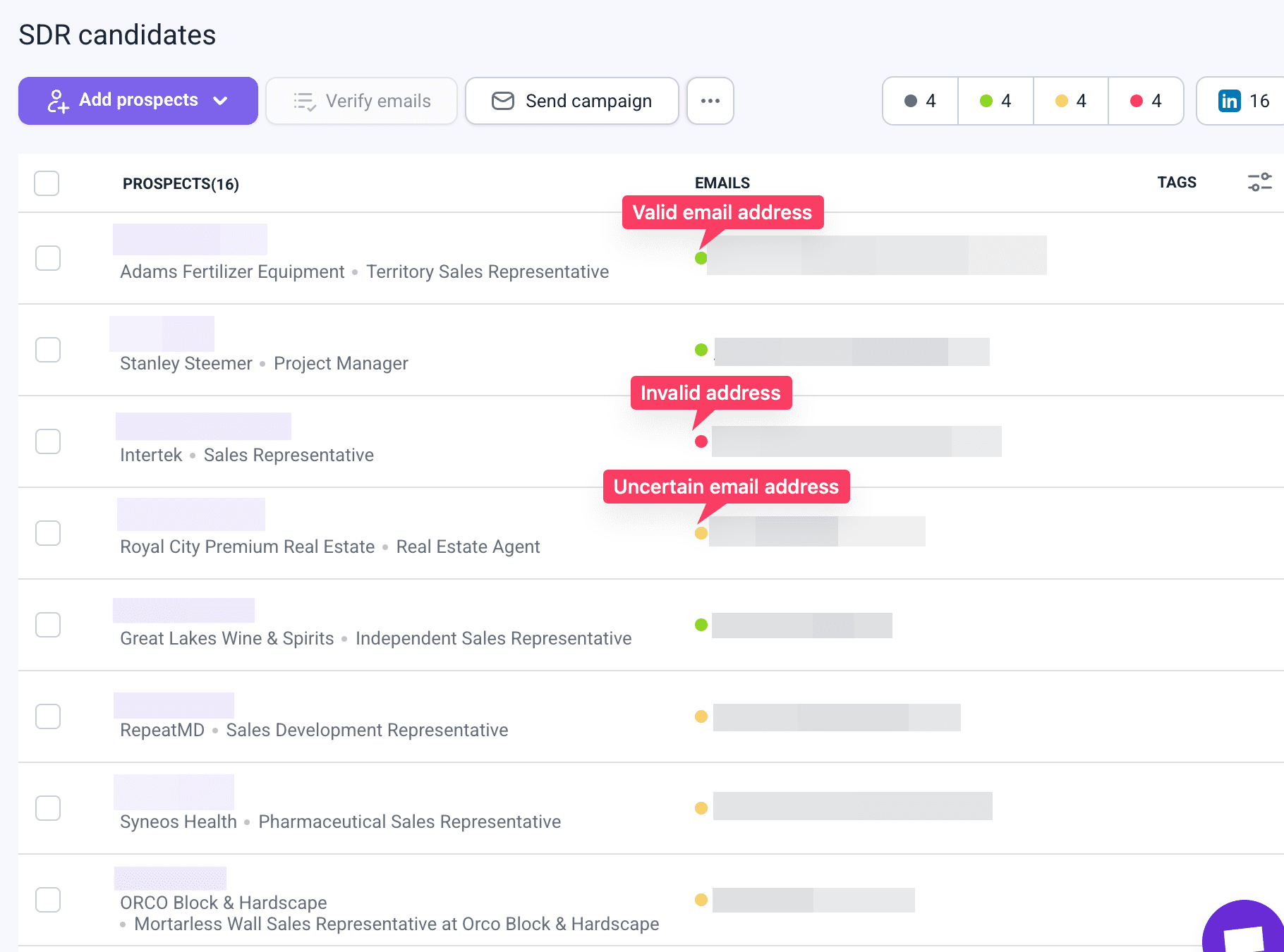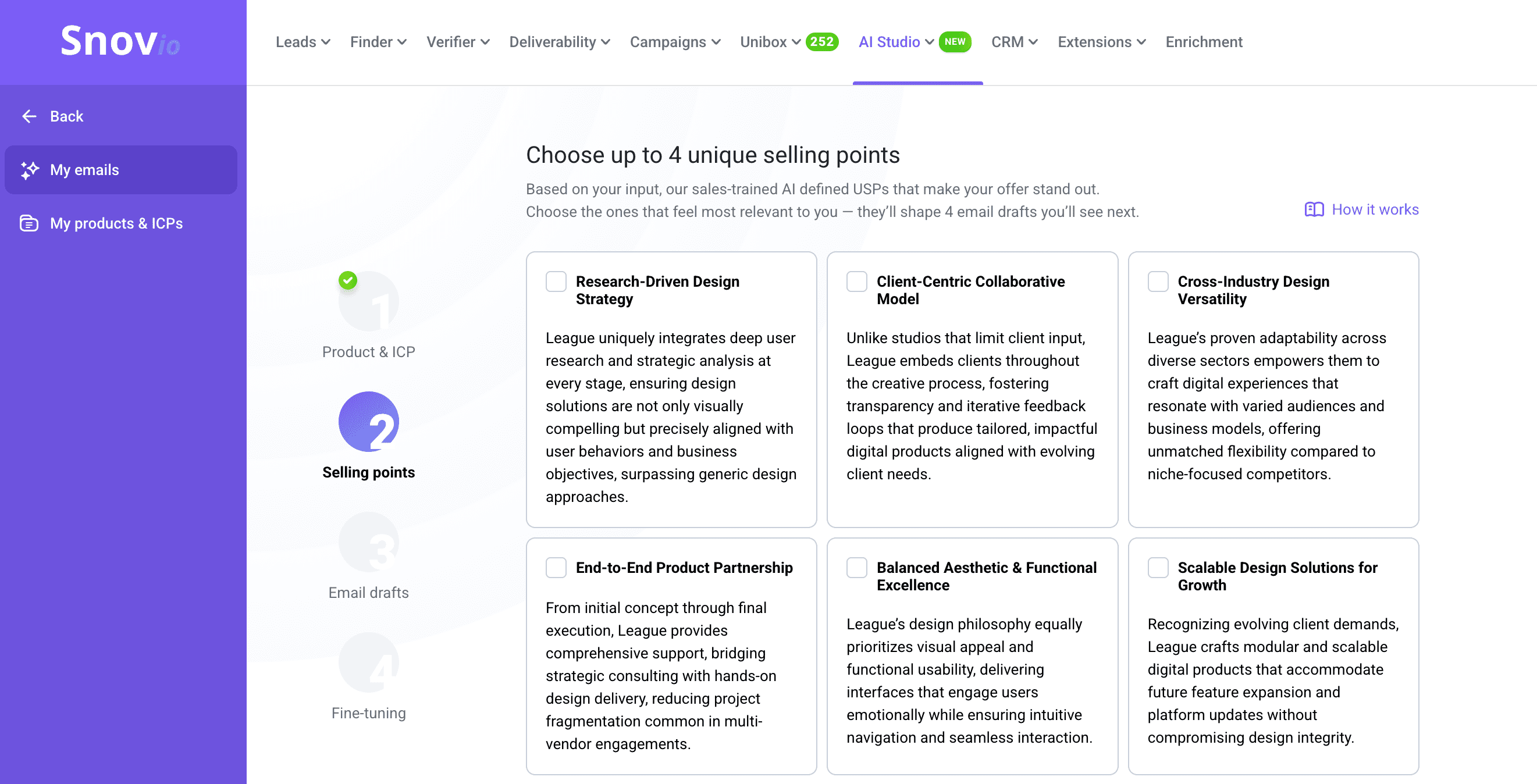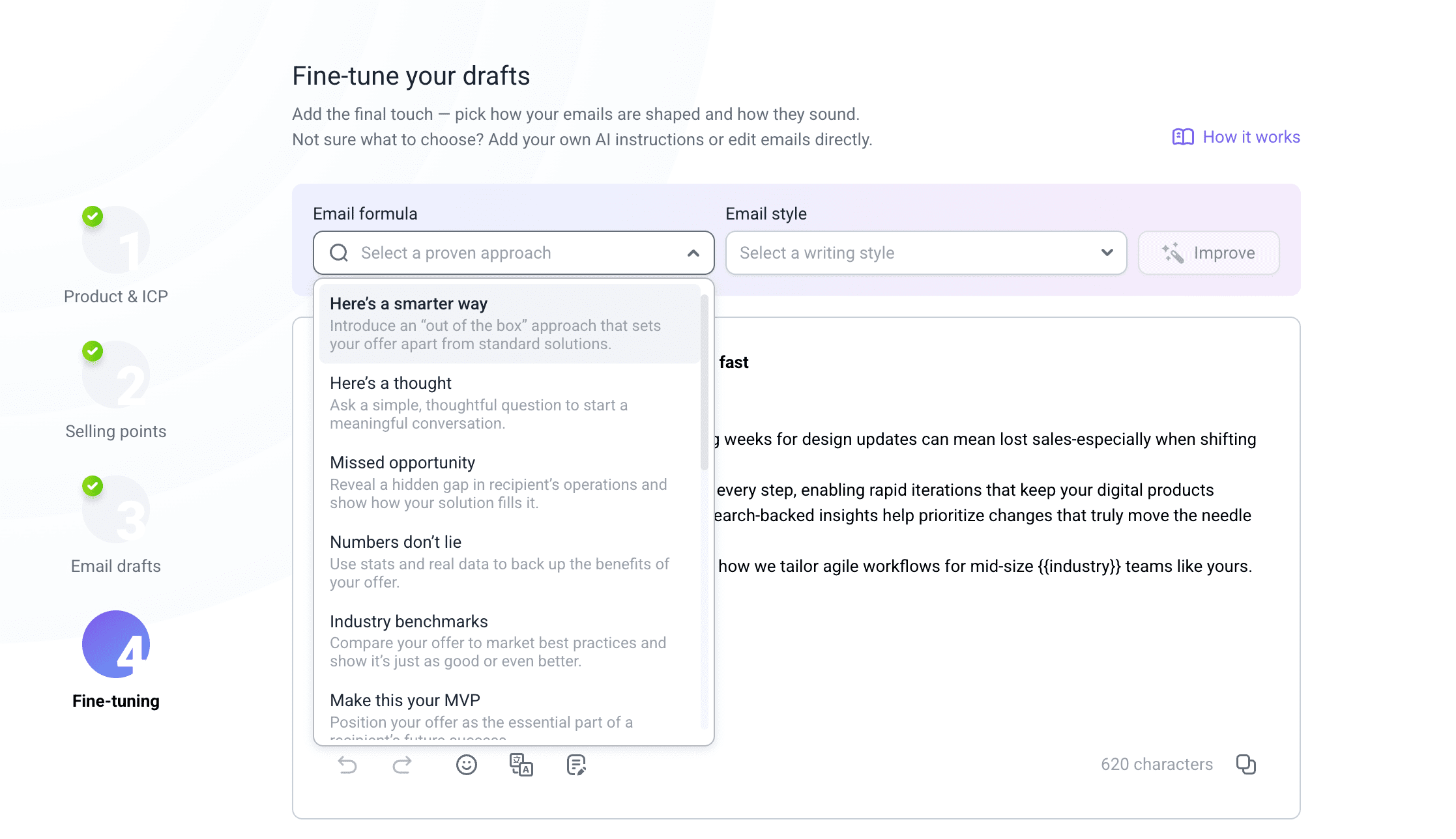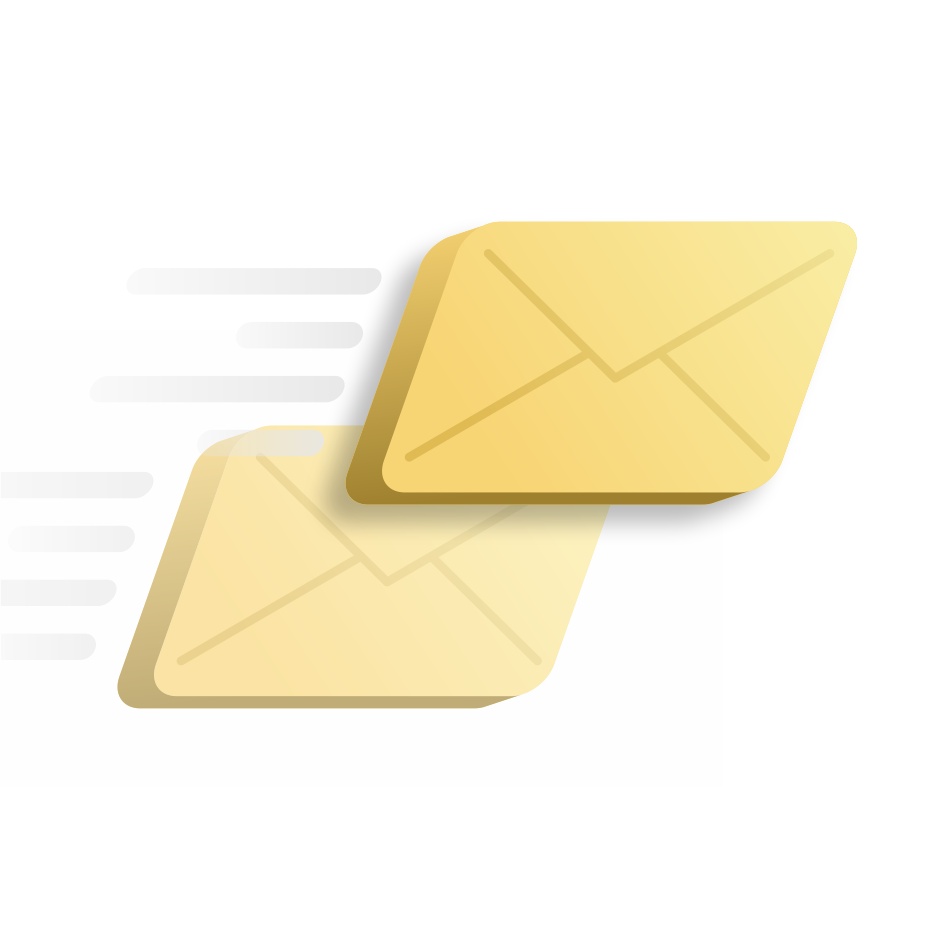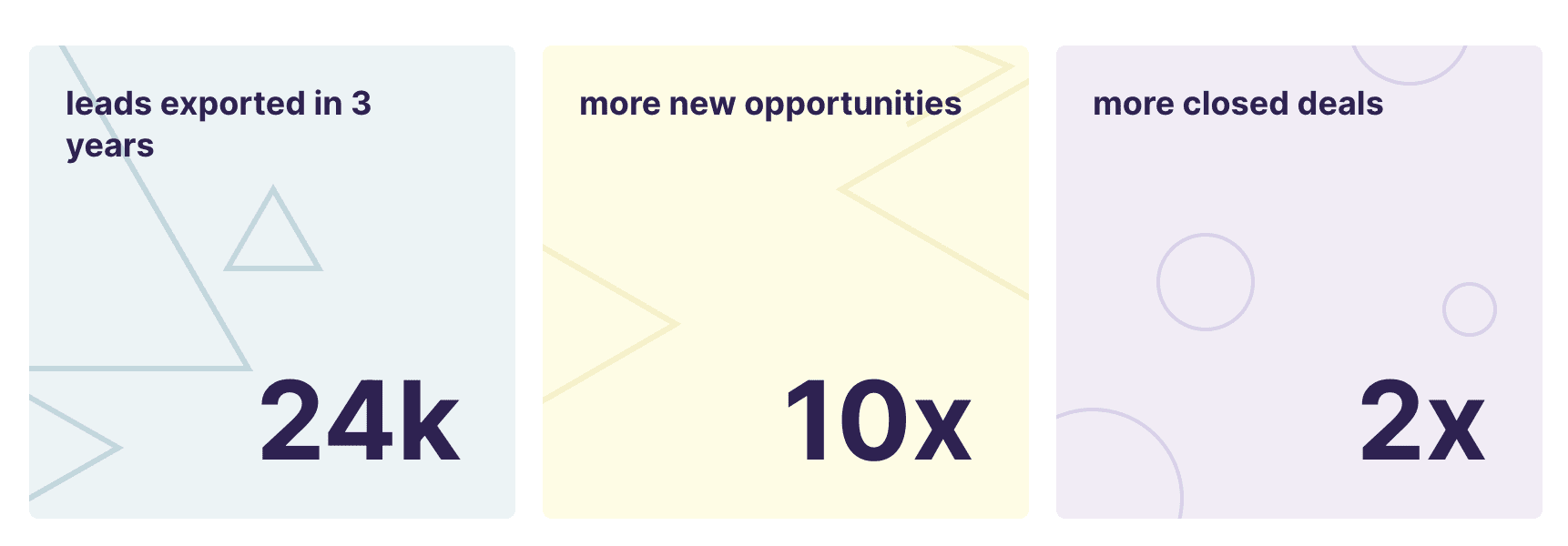TL;DR
Here’s a comparison table showcasing the difference between cold email vs email marketing:
| Aspect | Cold email | Email marketing |
|---|---|---|
| Audience | Cold prospects with no prior interaction | Opted-in subscribers or existing customers |
| Main goal | Start a conversation, generate new leads | Nurture existing leads, build loyalty, and encourage purchases |
| Tone & structure | Conversational, plain text, highly personalized | Structured, visual, often template-based |
| Tools | Email finders, verifiers, and cold email software | Email marketing tools with automation & segmentation |
| Frequency | One-off or short automated sequences | Scheduled, recurring campaigns |
| Message format | Plain-text, 1:1 style messages | HTML designs, branded templates, CTAs |
| Funnel stage | Top (initial contact and qualification) | Middle to bottom (nurturing, loyalty, retention) |
| Visual elements | None or minimal | Often includes logos, colors, and images |
Email remains king, with nearly 5 billion users expected by 2027, which is more than half the global population. Not tapping into it means missing major opportunities. Yet, standing out in an overflowing inbox, let alone not getting ignored or flagged as spam, is quite challenging.
The key? Being strategic. And that starts with a clear understanding of the difference between cold email vs email marketing.
In this article, we’ll break down when to use each and why it matters.
Outline:
What is a cold email?
A cold email is a type of message sent to someone who hasn’t had prior contact with your business. It’s often the first step in introducing your company, starting a conversation, or sparking interest in your offer.
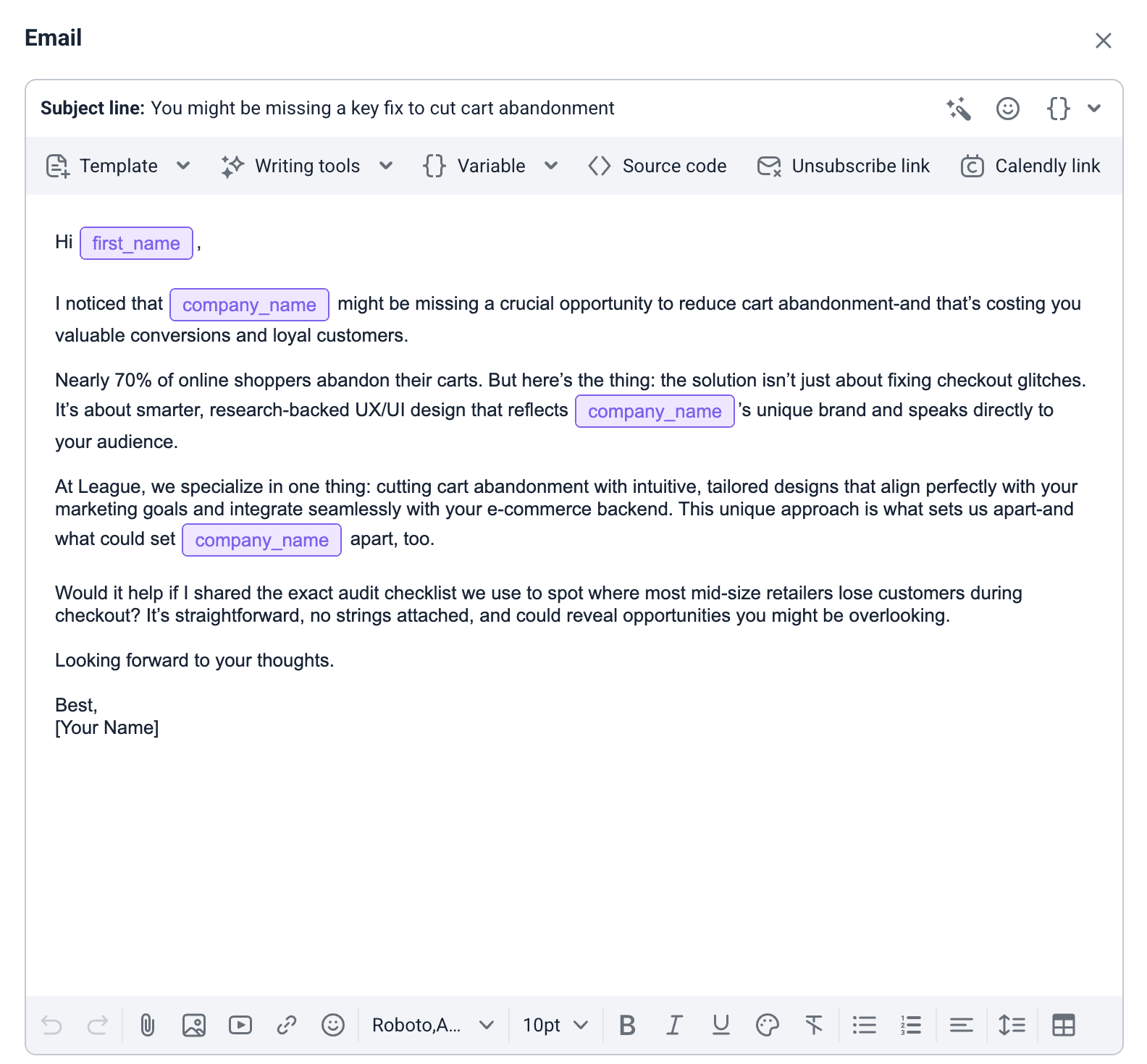
Unlike promotional emails to existing customers, cold emails aren’t about making an immediate sale. Instead, the goal is to break the ice, establish credibility, and gradually guide the recipient into your sales funnel.
To achieve that, effective cold email strategies typically rely on a few key elements:
- Clear value proposition: Focus on what’s in it for the recipient.
- Relevance: Tailor your message to their role, industry, or current challenge.
- Segmentation: Group prospects by similar traits or needs to increase resonance.
- Personalization: Add a human touch to your message to stand out and spark curiosity
Compliance considerations (GDPR, CAN-SPAM)
Because cold emails are unsolicited by nature, they carry a higher risk of being flagged as spam. This, in turn, can hurt your sender reputation and negatively impact your email deliverability over time.
To avoid these pitfalls, it’s crucial to follow compliance regulations, like the GDPR and CAN-SPAM Act. They are designed to ensure that the messages people receive are respectful, relevant, and easy to opt out of.
To stay compliant and maintain healthy deliverability, make sure to:
- Use accurate sender information
- Include a clear and accessible unsubscribe link
- Avoid misleading subject lines or content
- Only email-verified, up-to-date contacts
💡Expert tip
Sending to unverified or outdated contacts can lead to high bounce rates and spam issues. To reduce that risk, we recommend using Snov.io’s Email Verifier to validate and clean your email list.
Our extension is 100% safe to use as we are LOA (Letter of Authorization) certified, fully adhere to GDPR laws, and protect your personal and business information to prevent any unauthorized access or misuse of your data.
→ Learn more about our safety measures
Cold emailing use cases
Cold emailing is a helpful tool in various cases and, when done right, can bring you strategic advantages of reaching the right people at the right time.
Here are a few examples of use cases for cold outreach:
- Sales prospecting
Cold outbound emails are a go-to strategy for initiating conversations with potential customers who haven’t yet interacted with your brand. It’s a powerful way to get on a prospect’s radar and open the door to future communication.
- B2B lead generation
If you’re entering a new market or targeting a specific segment that fits your ideal customer profile, a cold email strategy can help you generate a pipeline of fresh leads.
- Business development
Cold outreach also plays a key role in B2B growth strategies. It helps whether you’re exploring partnership opportunities or introducing a new service.
- Recruiting
Hiring managers often rely on cold outreach to connect with talent. This tactic can be especially helpful if you are targeting C-level executives or hard-to-fill technical positions.
What is email marketing?
Email marketing involves sending messages to people who have signed up to hear from your business. It is used to deepen relationships and increase the lifetime value of your audience.
At its core, the goal of email marketing is to build trust and deliver value. It’s designed to prompt action, such as purchases, event registrations, or ongoing engagement.
Opt-in email marketing includes a variety of messages created to engage your audience over time. For example:
- Welcome series introduce new subscribers to your brand and set expectations for future.
- Newsletters regularly deliver updates, content, and promotions to maintain interest.
- Promotional campaigns announce sales, new products, or limited-time offers to drive immediate action.
- Seasonal campaigns around holidays or key events help brands tap into timely interest and boost short-term sales.
At Snov.io, we care about helping users get real results. Here’s just one example of how we support your journey through email marketing:
So, email marketing helps you nurture your leads and provide valuable insights to them.
Email marketing use cases
Customer retention: Businesses use opt-in email marketing to stay top of mind after purchase. This encourages repeat business and reduces churn.
Brand loyalty: Regular personalized emails remind subscribers why they chose your brand. By sharing insights or early access to new products, businesses reinforce connection and trust.
Lead nurturing: When leads aren’t ready to buy, email provides a way to stay in touch, offer value, and move them closer to conversion over time.
Cold email vs email marketing: Understanding the core differences
Cold emailing is an outbound email strategy that targets new prospects who have not previously engaged with your brand. This makes it ideal for B2B lead generation and sales outreach.
Email marketing sends custom emails to contacts who opted in, helping to keep them engaged.
The main difference is that cold email starts the conversation, while email marketing builds the relationship. But both rely on effective strategy and the right email campaign tools, such as Snov.io, to succeed.
Cold email vs email marketing serve different purposes and require different approaches, even though both rely on the same channel.
Audience psychology
Cold outreach targets people who are not expecting to hear from you. That means your message must feel natural, relevant, and non-invasive. It’s about earning attention, not assuming it, and subtlety matters here.
In contrast, email marketing reaches people who have opted in, so the trust is already there. That kind of trust opens the door to deeper engagement with your content.
Tone and personalization
Cold emails often mirror one-on-one communication. They avoid flashy formatting and rely heavily on personalization. To be effective, they must signal relevance within the first few lines, often by referencing shared connections or pain points.
With Snov.io’s ICP based email builder, you can create personalized emails based on your product or service information, value points, and target audience.
After you choose up to four unique selling points, the tool will draft four copies for you. You can then fine-tune any copy you want and adjust it based on a selection of email formulas:
Alternatively, you can change the email style and adapt to sound like one of the world-famous sales specialists:
Email marketing can afford to be more structured and brand-forward. Thanks to subscriber familiarity, it supports a more formal tone, rich visuals, and so on.
Timing and behavior triggers
Timing plays a strategic role in cold outreach. Messages need to land at the right moment: during business hours, around industry events, or after relevant news.
This is where smart email automation with a Cold Email Tool becomes essential. Use it to send dynamic email campaign sequences that adjust based on recipient behavior, such as opens and clicks.

With email marketing, though, timing is often based on data and past interactions with your leads. For this purpose, segmented lists and behavioral triggers help determine the best moment to reach each subscriber.
Pros and cons of cold email
It’s high time to weigh the strengths and challenges of using cold email:
✅ High lead generation potential
Cold emails are for starting conversations, not just maintaining existing ones. This makes them especially effective for reaching decision-makers and expanding your customer base.
|
🖊️ Case study One of our clients, Koncepto, used this approach to quickly grow their leads without harming their sender reputation. By switching to Snov.io, they reached out to verified contacts with automated campaigns. As a result, they saw 10 times more new opportunities and a much lower bounce rate.
|
✅ Controlled, non-intrusive engagement
Unlike cold calls, cold emails allow recipients to read and respond when it suits them. This creates a permission-respecting experience that improves receptivity. It’s especially crucial in B2B environments where buyers prefer to evaluate offers on their own time.
✅ Boosts brand awareness
Even when recipients don’t reply instantly, your outbound email still introduces your company. Over time, these touches contribute to increased brand visibility, laying the groundwork for future engagement.
❌ Deliverability challenges
If your email list includes invalid addresses or your domain isn’t warmed up properly, your messages might never reach the inbox. Poor deliverability not only lowers your email response rate but can also damage your domain reputation.
❌ Risk of being flagged as spam
If you send generic, irrelevant, or overly frequent emails, you risk being marked as spam. This damages both your brand and your deliverability.
❌ Higher engagement barriers
Cold email recipients have no relationship with your brand, making it more challenging to get responses. Your messaging must work harder to establish credibility, demonstrate value, and motivate action.
Pros and cons of email marketing
Now let’s evaluate the upsides and trade-offs of email marketing:
✅ Budget-friendly
Email marketing is remarkably affordable. There are no media buying fees or high upfront investments, just your email tool and content.
✅ Warm audience
Since subscribers actively opt in to receive updates, you’re reaching a warm audience who already trusts your brand. This permission-based model improves engagement and lowers the risk of being marked as spam.
✅ Shareable content
Emails can be easily forwarded or shared, helping spread your message organically. This form of digital word-of-mouth can extend your reach and enhance brand visibility without extra cost.
✅ Full customer journey coverage
Email marketing isn’t just for post-purchase engagement. It works at every touchpoint, from introducing a product to reactivating dormant customers.
❌ Risk of fatigue or frustration
Even opt-in audiences can become overwhelmed. Sharing irrelevant content may cause recipients to unsubscribe or ignore future emails.
❌ Crowded inbox challenge
With countless emails vying for attention, even high-quality campaigns can go unnoticed. Subject lines, timing, and value propositions must be carefully optimized to avoid being buried or ignored.
❌ Spam filters and deliverability challenges
Email filters are increasingly strict. If your copy has trigger words or your domain is poorly configured, your message may never reach the inbox. Ensuring good email deliverability requires ongoing attention to sender health and list hygiene.
How to choose a strategy for your goals
When evaluating cold email vs email marketing, the decision depends on your specific goals, audience, and strategy.
Match your strategy to your goal
Cold emailing works best for direct prospect acquisition. It’s especially valuable when you’re struggling to generate leads or entering new markets. This approach excels at targeting specific decision-makers and closing high-value deals.
Email marketing prioritizes conversion optimization. It’s ideal for businesses with substantial website traffic but poor conversion rates. This approach reduces customer churn and educates prospects about complex products.
The cold email vs email marketing distinction becomes clear here: one builds new relationships while the other optimizes existing ones.
Know your audience
Cold email is suitable for smaller, highly targeted prospect lists with no prior brand interaction. These contacts need individual research, which limits your daily cold outreach volume.
Email marketing, meanwhile, works best with subscribers who’ve already shown interest.
Blend cold email and email marketing for a full-funnel strategy
Ideally, a smart cold email vs. email marketing approach starts with cold emailing to acquire new prospects. Then, it transitions them into email marketing systems for nurturing.
Earlier-stage businesses should focus more on cold acquisition. In contrast, well-established companies with large subscriber bases can prioritize automated nurturing.
Most successful companies eventually rely on both strategies working together. The cold email vs email marketing debate, then, becomes less about choosing one over the other and more about using each at the right time.
How Snov.io supports both cold emailing and email marketing
You don’t need multiple tools for each method of outreach you work with. With Snov.io, you get a variety of features built specifically for lead generation specialists, SDRs, and marketing managers.
For sales and lead generation, Snov.io offers powerful features like email finding, verification, personalization, and automated cold outreach sequences with condition-based follow-ups.
For marketing teams, it doubles as a platform for drip campaigns, list segmentation, performance tracking, and long-term relationship building.
For recruiters, Snov.io provides LinkedIn Email Finder, integration with Sales Navigator, and cold emailing features.
For agencies, this platform offers subscriptions with unlimited team seats, unlimited campaigns, team data access management, and much more.
With built-in CRM, deliverability tools, and AI-powered automation, Snov.io equips lead generation specialists, SDRs, and marketing managers with everything they need to run personalized, compliant, and scalable campaigns—without switching between multiple tools.
With Snov.io, we’ve expanded our contact list by 30%, adding over 40,000 leads from 35 campaigns in 2023 alone.
Co-founder and Communication Specialist, HAS Prospecção Corporativa
Key takeaways
At the end of the day, cold email vs email marketing isn’t about choosing one over the other; it’s about knowing when and how to use each effectively.
Cold emails help you reach new prospects and open doors to fresh opportunities. Email marketing, meanwhile, nurtures existing relationships and drives long-term engagement.
Both approaches rely on strategic execution and the right email campaign tools to deliver results. And using Snov.io’s outreach tools helps you automate, personalize, and track your campaigns.
